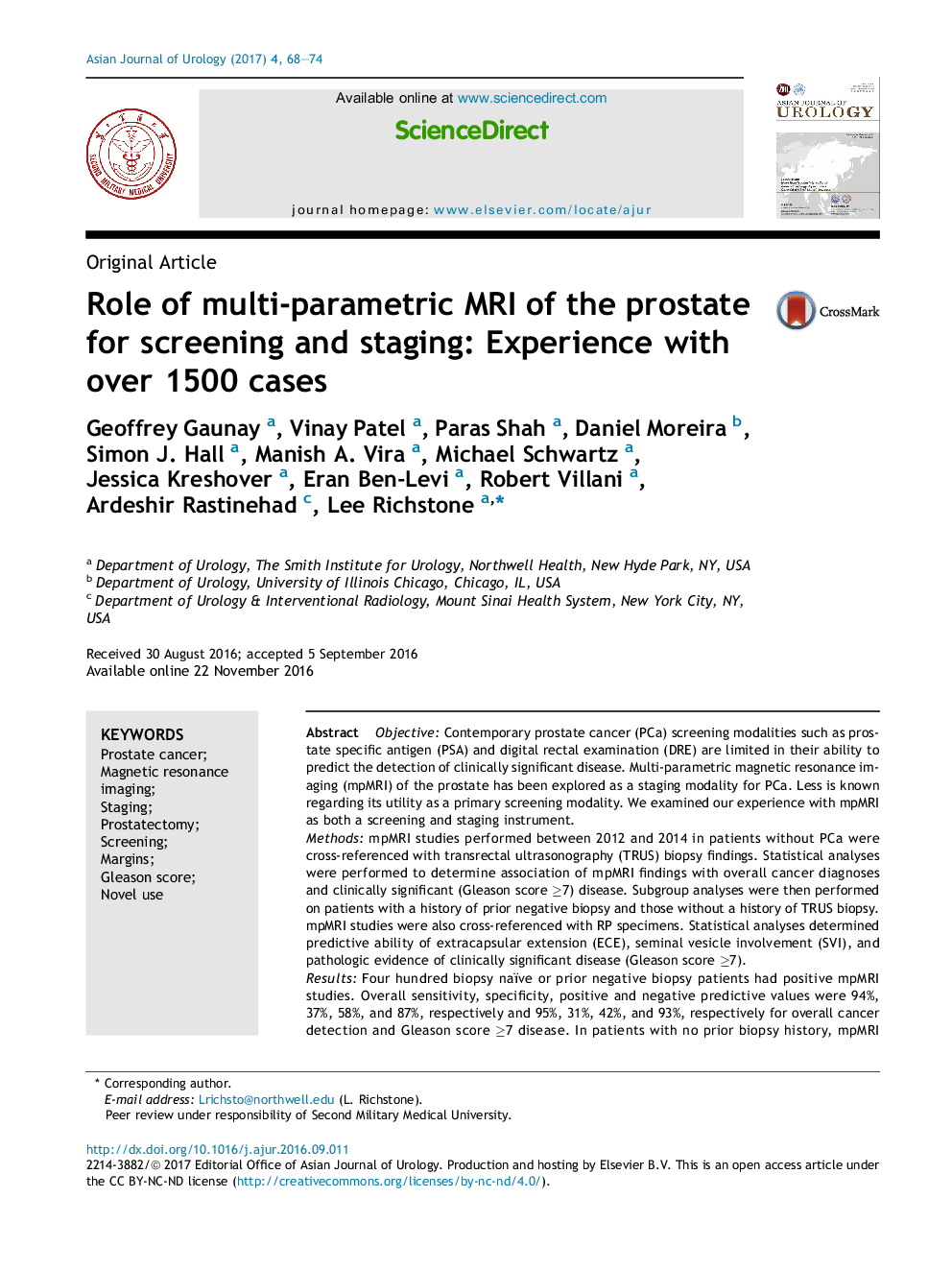| Article ID | Journal | Published Year | Pages | File Type |
|---|---|---|---|---|
| 5685908 | Asian Journal of Urology | 2017 | 7 Pages |
ObjectiveContemporary prostate cancer (PCa) screening modalities such as prostate specific antigen (PSA) and digital rectal examination (DRE) are limited in their ability to predict the detection of clinically significant disease. Multi-parametric magnetic resonance imaging (mpMRI) of the prostate has been explored as a staging modality for PCa. Less is known regarding its utility as a primary screening modality. We examined our experience with mpMRI as both a screening and staging instrument.MethodsmpMRI studies performed between 2012 and 2014 in patients without PCa were cross-referenced with transrectal ultrasonography (TRUS) biopsy findings. Statistical analyses were performed to determine association of mpMRI findings with overall cancer diagnoses and clinically significant (Gleason score â¥7) disease. Subgroup analyses were then performed on patients with a history of prior negative biopsy and those without a history of TRUS biopsy. mpMRI studies were also cross-referenced with RP specimens. Statistical analyses determined predictive ability of extracapsular extension (ECE), seminal vesicle involvement (SVI), and pathologic evidence of clinically significant disease (Gleason score â¥7).ResultsFour hundred biopsy naïve or prior negative biopsy patients had positive mpMRI studies. Overall sensitivity, specificity, positive and negative predictive values were 94%, 37%, 58%, and 87%, respectively and 95%, 31%, 42%, and 93%, respectively for overall cancer detection and Gleason score â¥7 disease. In patients with no prior biopsy history, mpMRI sensitivity, specificity, positive and negative predictive values were 94%, 36%, 65%, and 82%, for all cancers, and 95%, 30%, 50%, and 89% for Gleason scoreâ¥7 lesions, respectively. In those with prior negative biopsy sensitivity, specificity, positive and negative predictive values were 94%, 37%, 52%, and 90% for all cancers, and 96%, 32%, 36%, and 96% for Gleason score â¥7 lesions, respectively. Seventy-four patients underwent radical prostatectomy (RP) after mpMRI. Lesion size on mpMRI correlated with the presence of Gleason score â¥7 cancers (p = 0.005). mpMRI sensitivity, specificity, positive and negative predictive values were 84%, 39%, 81%, and 44% respectively, for Gleason â¥7 cancer. For ECE and SVI, sensitivity and specificity were 58% and 98% and 44% and 97%, respectively.ConclusionmpMRI is an accurate predictor of TRUS biopsy and RP outcomes. mpMRI has significant potential to change PCa management, particularly in the screening population, in whom a significant proportion may avoid TRUS biopsy. Further studies are necessary to determine how mpMRI should be incorporated into the current PCa screening and staging paradigms.
